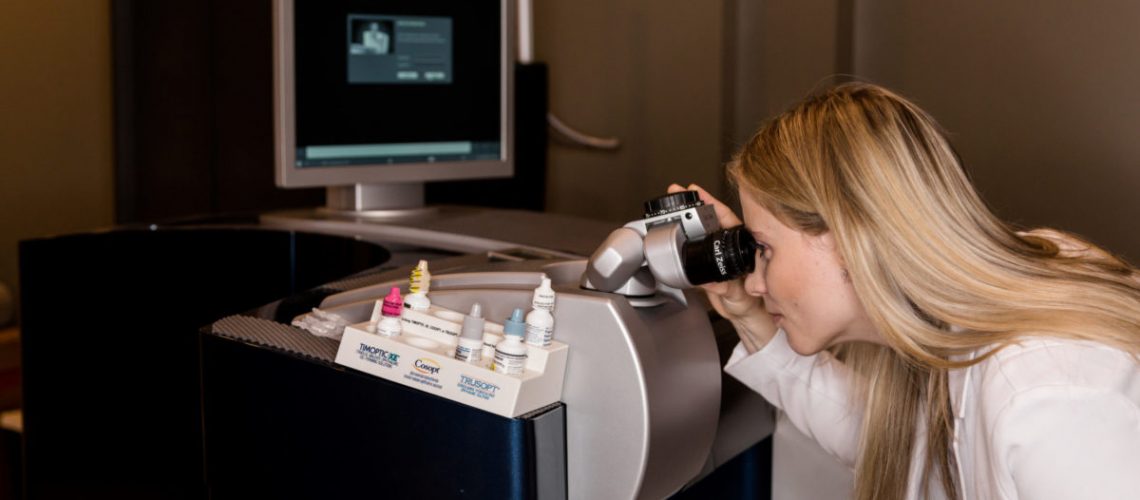Home » Can I Get LASIK If I Have A Stye?
Can I Get LASIK If I Have A Stye?
The answer is both yes and no. A stye is temporary, and it is a good idea to wait for an active stye to resolve before proceeding with LASIK.
That being said, you can come in for a preliminary evaluation for LASIK, or Laser-Assisted In Situ Keratomileusis, even while you have a stye, to see if you are a candidate for LASIK, or perhaps another laser corrective procedure, such as PRK, or photorefractive keratectomy, or SMILE, Small Incision Lenticule Extraction, the latest advancement in laser vision correction. During this preliminary evaluation, many measurements will be performed. The most important ones to determine whether you are a candidate for LASIK or not include a topographical map of your cornea (to make sure you do not have irregular astigmatism), your prescription, and the corneal thickness. There are other considerations that will determine whether you are not a candidate (family history of certain corneal dystrophies/ corneal transplants), history of shingles or herpes in the eye, scars, and history of other infections. If you come in for a preliminary evaluation while you have a stye and are told you are a candidate, if you choose to proceed with the procedure, you will need to return for repeat measurements once the stye has resolved. If you are a contact lens wearer, you will need to be out of your contacts for a certain amount of time prior to the final calculations. If you wear soft contact lenses with no astigmatism, you should be out of your contacts for 7-10 days. If you wear soft contact lenses with astigmatism correction, you should be out of your contacts for 14 days. If you wear rigid gas permeable lenses, you should be out of your contacts a week for each decade you have been wearing them prior to coming in for final measurements to ensure your cornea has time to stabilize.

Why do I have to wait to have the procedure if I have a stye?
A stye, or a hordeolum, is an active meibomian gland infection or a clogged meibomian gland. It can oftentimes lead to a bump on one of the eyelids. It is not on the eyeball itself, but rather the eyelid. You can have more than one bump. It can be an internal hordeolum or an external hordeolum. This refers to whether the bump is on the outside of the eyelid (easily visible to the naked eye), or the inside. Depending on where on the eyelid it is, or how many bumps there are, a stye can physically push on the cornea or sclera underneath the eyelid, the outermost part of the eye, and change the curvature of the eye. This is why sometimes your vision can be blurry when you have a stye- the prescription may (temporarily) change, and you may have (temporary) astigmatism. The pushing onto the cornea can change (temporarily) curvature of your cornea will impact the calculations performed for your refractive evaluation, and this will ultimately impact the numbers that are used for your correction. Therefore, it is better to treat your stye and make sure the bump goes away so it does not affect the corneal surface to ensure the most accurate measurements.
Another important reason to wait until the stye has resolved is because oftentimes a stye is treated with steroid drops/ ointment. These drops have preservatives in them and they can affect the corneal surface as well, leading to inaccurate measurements. … Notice a theme here?! You also don’t want to do a procedure on the surface of the cornea while there is an active infection in a stye so close to the surface of the cornea because it can increase the risk of a topical infection on the cornea after the procedure.
This leads to another main point of why it’s important to have an optimized corneal surface prior to your LASIK calculations. Other factors besides styes, such as meibomian gland dysfunction/ blepharitis and dry eye can also impact the measurements and thus the visual outcome of a LASIK procedure. Blepharitis, or meibomian gland dysfunction, is usually the underlying cause of styes, and to the extent that it can be kept under control, styes can be avoided. Even if blepharitis does not lead to styes, the clogged meibomian glands do not allow for a healthy tear film to coat the surface of the cornea, and this leads to poor calculations and measurements. Treating meibomian gland dysfunction is relatively straightforward – use a warm compress on your eyelids for 30 seconds each night (a clean hand towel soaked in hot but tolerable water), and then wipe off your eyelids with a foam such as Ocusoft, Avenova, or Cliradex. The heat helps open up the glands and then the foam washes the oil off. Occasionally an oral medication called Doxycycline can be helpful to get blepharitis under control.
Dry eye can similarly lead to inferior steepening and an irregular corneal surface and imperfect measurements. Dry eye is treated in a step-wise fashion, initially with over the counter drops and ointments, then prescription drops such as Restasis, Xiidra, and Cequa, punctal plugs, compounded drops, and special lenses. You want to make sure your dry eye is under control prior to proceeding with LASIK.
To summarize, getting an optimal surface will ensure perfect measurements and thus perfect calculations and an optimal LASIK outcome. To ensure great measurements, it is important to first get a stye, blepharitis, and dry eye under control.





